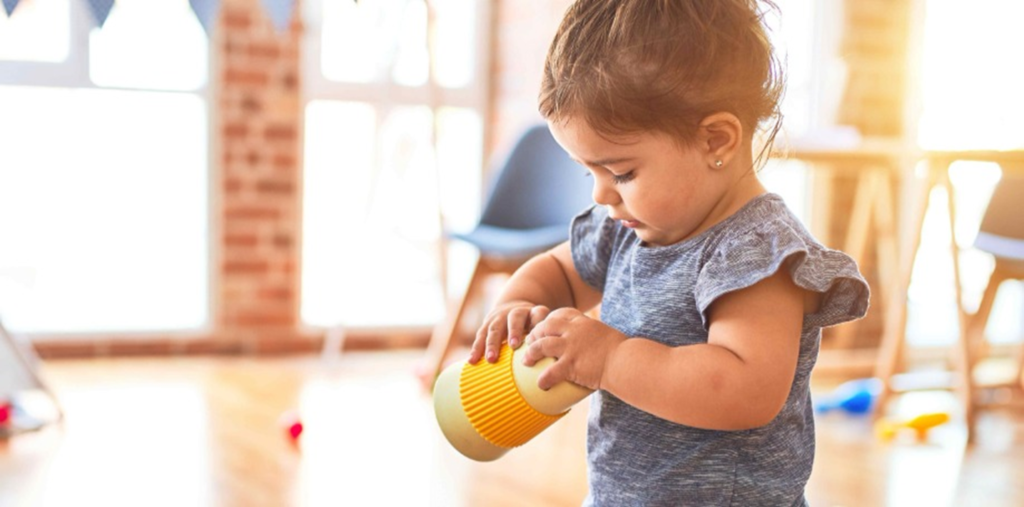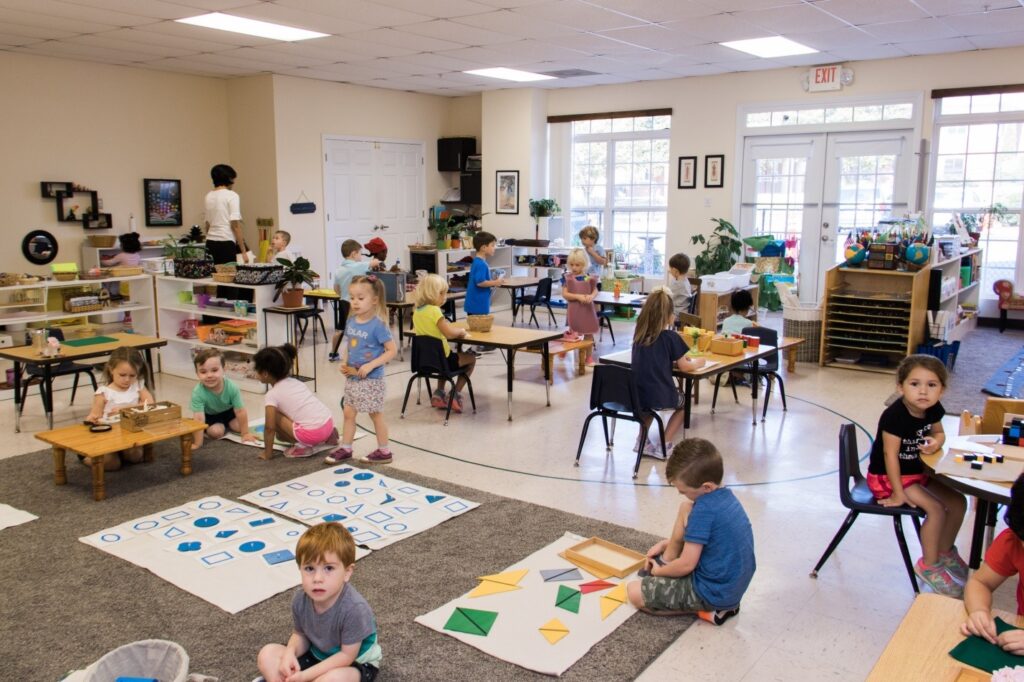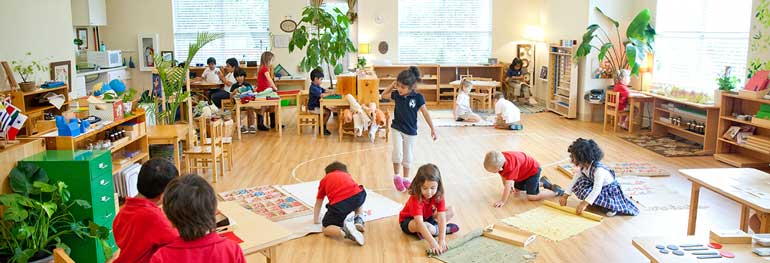There are certain Myths that surround the Montessori Method that have been doing the rounds for ages and these need to be busted.

What is Montessori:
A simple way to put it would be – it is the Philosophy put forth by Dr. Maria Montessori of a Child’s Development – the way she observed it, as revealed to her by the Child himself.
While observing children working left to themselves, given the freedom of time and choice of work, she noticed certain amazing secrets that the Child revealed – what she calls “The Secret of Childhood.” Dr. Montessori’s philosophy is no way some armchair philosophy but is based purely on observation of children in a scientific and organized manner.
In a scientifically Prepared Environment, what is called a Montessori House of Children, children from all strata of society, from all over the world, learnt the concepts of the 3Rs and a lot more, much more quickly and easily as compared to children in traditional schools.
But, to put forth this philosophy of Dr. Montessori, that is more than a century old, is rather difficult.

One of the reasons for this anomaly is, there is no controlling body that hands out a franchise for Montessori. Montessori schools come in all shapes and sizes including those run at homes by mothers for their own and for children from around their neighbourhood.
While you may see many forms of Montessori, the main characteristics that determine whether the Montessori is authentic is:
- The Specially Prepared Montessori environment – known as the House of Children.
- Adults well trained in the Montessori method.
- Mixed age group of 2½ to 6-year-olds all in one environment
- 3-hour work cycle.
- Children exercising the freedom of choice of material, of speech, and the duration and number of times they work with each material.
However, there are certain Myths that surround the Montessori Method that have been doing the rounds for ages and these need to be busted.
Let us take a look at them.
Myth 1:
Montessori schools are only for gifted children:
In fact, Montessori schools are for all children, from across the world, belonging to any strata of society and any level of intelligence.
Children mostly start their Montessori schooling at the age of 2½ (in the Early Childhood Period Learning Program) and this is no age to determine whether the child is gifted or not. But very soon he/she learns to read and write, understand Arithmetic and have a world of knowledge with regard to names from all fields of Sciences and Arts.
To an outsider who is not familiar with the method, this may all appear extremely advanced for their age.
Montessori schools offer children activities that they perform with their hands and senses, based on each one’s individual need, capability and understanding, eventually turning all children into “Gifted Children.”
This is in total contrast to Myth 1.
Myth 2:
Montessori is for the mentally challenged children.
Although Dr. Montessori initially created a lot of the material for the mentally challenged, she observed that they made a world of a difference to normal children.
Normal children could derive a lot more, benefited a great deal and learned concepts more quickly using these material following her method.
Of course, you do find children with learning challenges in some Montessori Houses of Children, as the individual teaching approach helps to cater to and meet their individual requirements.
So all children benefit tremendously in Montessori Houses of Children.
Myth 3:
Setting up a Montessori School is expensive – so only rich children can afford it.
The very first Montessori school set up by Dr. Montessori herself was in the slums of Rome for children left unattended by blue-collared working parents. This was certainly not for rich children.
Children in Montessori Houses are shown how to handle the material with great care and respect. They learn to maintain and take care of their learning environment which they very soon learn to consider their own.
Thus, the so-called expensive Montessori material may last for 20-30 years with minor touches of paints and repair each year. That definitely makes it a good investment for anybody who wishes to start a Montessori school with even just 1-2 environments.
The tuition fee charged is mostly on par with other traditional schools. However, parents choose a Montessori school when they see the immense benefits the method can offer to their child.
They can very clearly see not just the curriculum, but also the amazing materials laid out systematically for their child’s use. The Montessori adult is always more than happy to explain how it all works.
Myth 4
Montessori is affiliated with the Catholic Church
Dr. Montessori did include developing religious and moral values among children, but the Montessori method has no such Catholic Church religious programs or affiliations.
Montessori schools follow the values and beliefs of the staff and the community they constitute, always holding the highest moral and spiritual values that, anyway, come naturally to a child.
Myth 5.
The Montessori syllabus has no structure:
Some parents feel that Montessori children just pick up and perform activities at random, as they please. They do what they like during class hours. There is no structure to the syllabus.

As a matter of fact, the Montessori classroom and syllabus are very well structured. The activities presented to the children depend on their readiness to grasp the particular concept.
The activities are graded based on their difficulty levels and go from simple to complex, from concrete to abstract, thus developing their understanding of concepts in a systematic manner.
The adult decides, based on her observation of the child, what he is ready for and then offers a detailed presentation of the working of the material.
The child, once shown, is free to choose that activity whenever he feels the need. Thus, it so happens that the child has a wide range he can choose from.
He then works in a systematic, organized and disciplined manner following his own natural and normal tendencies and in-built timetable for his development.
On the contrary, traditional schools set the syllabus for an entire group of similar-aged children. Their individual learning capacity and speed are not taken into consideration. The whole bunch is looked at as one unit. All are taught that one concept at a time, whether he needs it or not, or whether he is ready for it or not. They are believed to have short attention spans so they are given different lessons of short durations.
This Dr. Montessori observed is not true. Here, you may have children working with e.g. – one geography project all day – and then – come back again the next day and go about repeating the entire project all over again.
So it may appear that Montessori is not structured – but it is. The structure revolves around each individual child’s needs of development.
Myth 6
Montessori is too structured
In a Montessori classroom, we refer to the Materials as Developmental Materials and certainly not “Toys”. We DO NOT call what children do – PLAY – we call it “Work”. In fact, Dr. Montessori would take offence when her method was called the ‘play-way’ method.
A child’s work towards his development is certainly not Play. The child finds his work extremely satisfying and pleasurable and finds no distinction between work and play. Children in Montessori Houses always find their work interesting and fun.
The shelves in a Montessori House of Children are systematically arranged with material. So yes, it does look structured. But it is up to the child to pick up the material and work with it provided it has been first presented to him.
So yes, there is a structure, but that is what is important – with Freedom come Limitations – all planned but still according to what the child feels is good for him.
Myth 7
Children do not behave like children in a Montessori House of Children.
We are so used to seeing children throwing tantrums in supermarkets or running wild and screaming in parks, that that is what we associate children’s behaviour to be like.
In a Montessori House of Children, at one time, I had 75 children, and there was not a sound in the adjoining Administration office. When a visiting mother was taken to the children’s room, she was taken aback and was sure that we were following some kind of hidden trick for restricting and disciplining children.
Well, a child’s true behaviour is not what we are accustomed to seeing. Children, when they get busy with work in a Montessori House of Children will be naturally quiet and peaceful. Work is worship for them. They truly turn into soulful little creatures, and don’t need any kind of disciplining.
So, yes, children do behave like children in a Montessori House. That is what their true nature is.
Myth 8
The Montessori method does not allow children to play.
I would say it is downright insulting to think that children should be sent out to some kind of useless pastime outdoors, so that they don’t get in our way – and we call that “playing”.
All humans need to be contributing factors to their society. We often forget that children too have a deep desire to contribute meaningfully to their society.
In Montessori schools, children enjoy working with their material with great care and a sense of love and dignity. They feel good and have a feeling of satisfaction after completion of each of the activities. They do not feel the need for senseless “play” with toys that they cannot manipulate with their hands. That is the reason you see children trying to dismantle their cars and toys once they are done with “playing” with it for a while.
So, yes, children do not “play with toys” in Montessori Houses but love working with the Montessori Material tirelessly.
Myth 9
Montessori children cannot function without materials.
The Montessori material were scientifically designed by Dr. Montessori herself and some were borrowed from educationists and psychologists of her period.
Yes, the journey of understanding of concepts by children begins with these material, because they are in the Sensitive Period where they learn by using their hands and senses.
Once their concepts are clear, they are gradually weaned off the material and taken to abstraction, where they no longer need the material. It is like a airplane that needs the support of the tarmac to run some distance and catch speed before it can take off.
Similarly, with the Montessori children, once their concepts are clear, once they have used the material sufficiently, they themselves stop using them. e.g. they memorize the results of all the mathematical operations just by repeatedly working with the material, without consciously doing so, after which they no longer need the material.
When the child has understood listening to sounds in a sequence using the Movable Alphabet, they no longer need it. They directly put pencil to paper and create words, sentences…stories.
So, yes, Montessori children need the material to start with but then take off to the skies once their concepts are clear.

Myth 10
Montessori materials Constitute the Montessori material
When you visit a Montessori school, you are struck by the array of colourful material all neatly arranged in order, literally inviting you to pick them up and work with.
Some traditional schools go shopping for Montessori Materials with the hope to incorporate some of the good that they may do to their own schools. The materials, however ,do not constitute the method.
Montessori education does take place in extremely prestigious locales throughout the world, and you would find the beautifully designed material highly polished, in their prime state exhibited on neat shelves.
However, Montessori schools do run in impoverished countries too, where the material is put together by the parents and teachers with whatever they can lay their hands on. They may make the 1000s cubes by cutting and pasting discarded cardboard boxes, or draw out and paint pictures by hand to create the language series etc. So, it is not the materials that makes the method.
Montessori materials are the tools that Dr. Montessori developed to complement and explain the method put together by her. Although the Control of Error is in-built in most of the materials, it is the trained Montessori teacher who takes on the responsibility to – in a very subtle manner – point them out to the child while offering a meticulous, well-planned presentation of the material.
Thus, it is not the materials, but the trained teacher and the method that make all the difference.
Myth 11
Montessori Children cannot spell – they do not know their ABCs.
One of the most confusing and unnecessary step in learning to read is first learning the names of the English Alphabet, then relating it to an object, e.g. Bee is for Bat and then finally saying that the sound that Bee makes is Buh.

Language sessions begin with Sandpaper letters in a Montessori House of Children where the Adult relates the symbol of the letter with the sound. This is followed by an array of pre-reading activities learning to recognize the beginning, ending and middle sounds in short phonetic words. Children learn to relate these sounds with objects placed in a basket and later with picture cards.
The Vocabulary that the Montessori child is exposed to is bewildering – to say the least. Where else do you find a child of four years recognizing a trapezium, or a triangular prism, or the shapes of the lamina or the names of continents or the land-and-water forms.
Myth 12
Montessori children are still learning numbers upto 10, when children in Kindergartens have reached 50.
At 3½ years, when the child is ready for Mathematics – what Dr. Montessori called the awakening of the mathematical mind, children learn various activities relating to numbers zero to 10. They keep at it for an entire year, till they are 4½ years. These numbers form the basis of the Decimal System.
Once the children have understood these basic laws that govern the Decimal System, the next step is to introduce children to numbers 9999. It is after all the place values that change and not the face values of digits 1-9.

Since the children have a firm foundation of the Decimal System, they easily graduate to working with numbers in thousands, while the children in conventional schools barely reach 100 with a lot of struggle and rote learning, most times hardly understanding any relation between the symbols and the quantities they represent.
Montessori Children, very soon, with repeated activities in Arithmetic learn their addition, subtraction, multiplication and division tables without ever deliberately trying to memorize them.
The concepts are made very clear as the children watch the play of hierarchies in the numbers and thoroughly enjoy their Arithmetic activities, thus developing a deep liking and then love towards Arithmetic. No phobia of Math ever touches a Montessori child – not that I know of.

So…What is the secret behind a Montessori School running so efficiently – year after year – in all parts of the world.
Dr. Montessori spoke of three most important factors in a House of Children.
The Child, The Prepared Environment and the Directress.
Yes, the adult looking after the children’s working in the Montessori House is called a Directress, not a teacher.
This Directress is like the Director of a play, keeping him/herself in the background while the actors – the children play their part. But there is no denying that the success of the play lies with the efficiency of the Director.
To be a Directress, you have to go through a thorough training at the Technical, Intellectual, and Spiritual level.
This does not just involve the presentations of working with the Montessori Material. The Materials are just the tools. The manner and the timeliness in which they are presented to each individual child, the observation, the judgement of when to present what, all comes with going through a thorough, well-designed Training Program.
SPORTS DAY AT THE EMIRATES MONTESSORI HOUSE OF CHILDREN

Originally published May 2, 2019